Menus
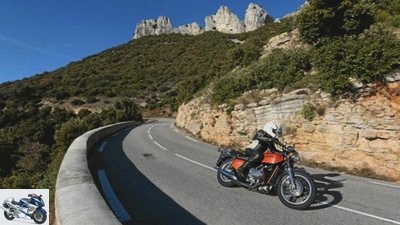
Jahn
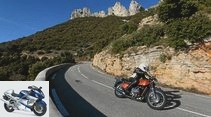
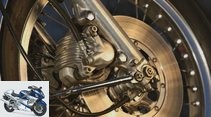
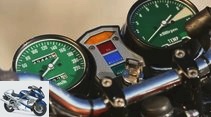
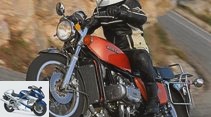
11 photos
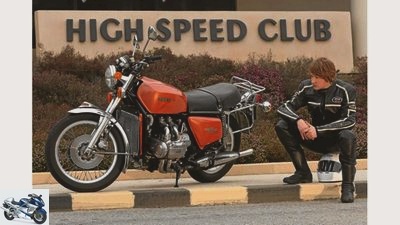
Jahn
1/11
In view of the enlightening driving impressions with the Honda Gold Wing from 1977, some old prejudices have to be straightened out.
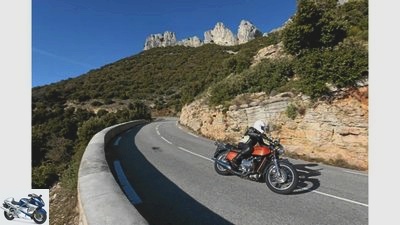
Jahn
2/11
For over 30 years it has been possible to glide along country roads on the Honda GL 1000 Gold Wing. With a lot of power and a balanced chassis it offers an incomparable charm. You can therefore see some close-ups of this successful bike here.
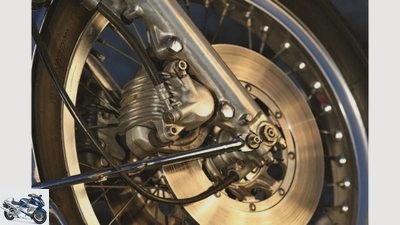
Jahn
3/11
The Gold Wing even had a double disc brake on the front wheel.
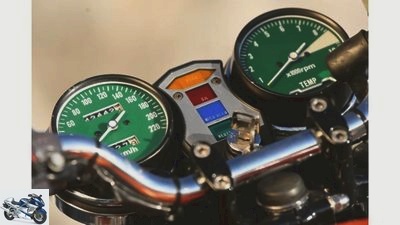
Jahn
4/11
The clear speedometer of the Honda Gold Wing is convincing.
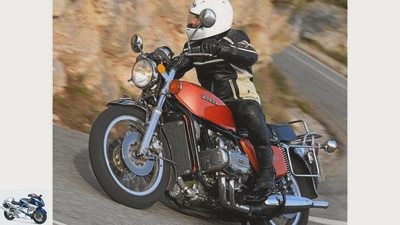
Jahn
5/11
Brisk curve scraping was never her domain. The testers noticed that in 1975. On the other hand, it is in its element when cruising at low speeds.
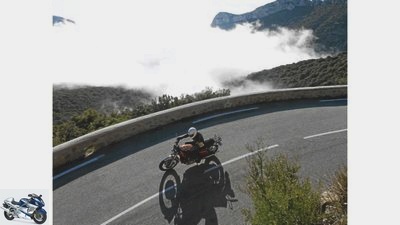
Jahn
6/11
The first really comfortable Japanese on the market. At the time, many questioned this characteristic of the Gold Wing.
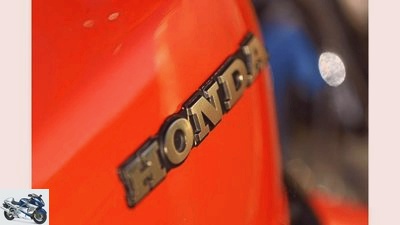
Jahn
7/11
With the GL 1000, Honda brought another milestone to the road in 1975 after its CB 450 from 1965 and the CB 750 Four from 1969.
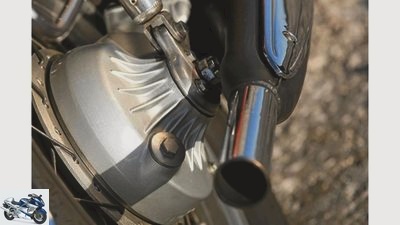
Jahn
8/11
A cardan from Japan? In the mid-1970s, motorcycles with cardan shafts came mainly from Germany. Honda showed that they could do without a chain.
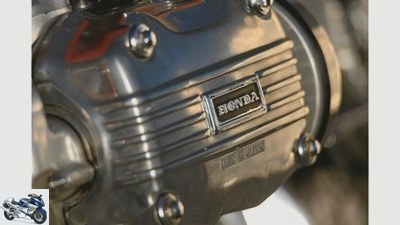
Jahn
9/11
The engine is still a real stunner today. Whispering, gentle violence from below.
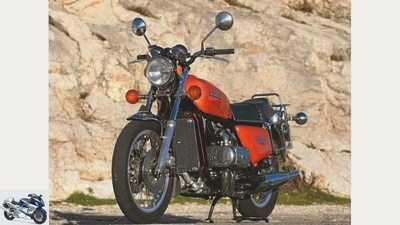
Jahn
10/11
As it sparkles in the winter sun, it looks like a simple classic today. In the mid-1970s, however, the unusual concept caused a stir.
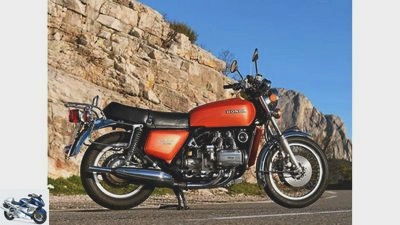
Jahn
11/11
It is hard to believe that the uncovered GL 1000 weighs almost six hundredweight with a full tank – until the first attempt to hoist it onto the main stand.
On the move: Honda GL 1000
Queen of the Highway: Honda Gold Wing
Content of
Honda’s luxury liner Gold Wing has been cruising the streets of the world since 1974. The milestone split the minds of the motorcyclist scene like hardly any other motorcycle – until today.
A Gold Wing, of all things! The name arouses associations. Unasked, memories of my early motorcycle days come to the fore. In the motorcycle-driving circle of friends, we were blaspheming about Honda’s thick ship, which crossed our paths a good 20 years ago as the six-cylinder GL 1500. This luxury liner with reverse gear and cruise control was the exact opposite of what we mean by motorcycling. For us a semi-detached house on wheels with a fitted kitchen. Fully disguised, fully equipped, fully quiet and fully stuffy. The term real estate took on a new meaning.
HToday a Honda GL 1000 from 1977 stands in front of me in the mild winter sun of southern France, the ancestor of all Gold Wings. The 1000 series boldly sticks out its four cylinders from under the dummy tank, as if to say, "see what i have to offer."
Flashback. In autumn 1974, when Honda presented the Gold Wing for the first time at the IFMA in Cologne, it did indeed have a lot to offer: With its layout with a water-cooled four-cylinder boxer engine, 999 cm³, 82 hp, 80 Nm and 295 kg, it broke new ground and set conceptual standards. For the first time a Japanese high-volume motorcycle had a cardan shaft instead of a chain, a Japanese four-stroke water cooling system. Further inspiring highlights were its three disc brakes, a tank placed under the seat and the two overhead camshafts each driven by a toothed belt. After the CB 450 from 1965 and the CB 750 Four from 1969, Honda broke new design ground and launched a completely new concept. And the motorcycle scene split up because of this heavy machine that didn’t really fit into any of the drawers that existed at the time. Some enthusiastically celebrated their technical progress, others decidedly rejected them due to their opulent appearance and heavy weight.
With a swing I push it off the main stand and start the engine. A wonderfully foggy note from a burned gasoline-air mixture fills the atmosphere. The subdued, sonorous babbling of the boxer spontaneously reminds me of a VW Beetle.
Jahn
Brisk curve scraping was never her domain. The testers noticed that in 1975, too. On the other hand, it is in its element when cruising at low speeds.
In 1975, journalists also noticed that the unit on the test machine ran as smoothly as silk, and when idling it hardly produced any more noise than a car engine under the hood. They attributed it to the noise-dampening “water protection coat”. The unusually quiet motor, which only produced 79 dB (A) when measuring the driving noise, always suggested a lower speed to the driver. So he was constantly traveling faster than the road traffic regulations allowed. And damn comfortable too. Back then, Honda found it difficult to position its top model in the motorcycle market with clear messages. Das MOTORRAD testers beat the pre-series machine at top speed over the autobahn and around the Hockenheimring. The low-lying notches and the exhaust system left traces in the asphalt when changing lean angles quickly. At least the testers came to the conclusion that the GL 1000 was not designed for “racing use, rather following the general trend as a travel machine with reserves”. A consumption of over ten liters was not surprising.
Bigger, stronger, more comfortable was in the specifications. Enjoyable motorcycling, cruising, as one would say today, was still alien to the Japanese manufacturers. The Gold Wing, on the other hand, was immediately apparent for what it was designed for: the stretched chassis, a seat that is comfortable for two people, a low-maintenance cardan shaft, a service-friendly boxer engine, the petrol tank placed under the seat bench, the engine runs smoothly and economical, all facts that speak for themselves.
The motorcycle scene wasn’t ready for the comfortable Gold Wing in the mid-1970s. The editor in Das MOTORRAD 5/1975 asked skeptically: "Is that the future of two-wheeler construction? If the colossal building is desirable, it sets a precedent?" And in issue 23/1975 the author predicted: "Honda has embarked on a path that heralds a new era. Good old style motorcycling seems to be a thing of the past." The GL 1000 dared to question the image of the die-hard biker.
Jahn
A cardan from Japan? In the mid-1970s, motorcycles with cardan shafts came mainly from Germany. Honda showed that they could do without a chain.
While I’m still thinking about it, we are slowly getting used to each other on the first corners. It shakes its power out of the speed limit, unspoiled, bearish, and accelerates with a low pitching torque of the cardan. Thanks to an ingenious mass balance, the otherwise typical boxer tilting around the longitudinal axis is no longer necessary. Slightly curved sections of the route invite you to lazy shifting gears. Moderate speeds are the Gold Wing’s elixir of life – just turn down the speed of everyday life, reduce stress. Travel instead of racing. Honda once advertised with the slogan “The incarnation for driving comfort on all roads”. I’m slowly starting to break down and understand my prejudices.
Shortly after Kawasaki unveiled its Z 900 Super 4 in 1972, rumors started circulating that Honda was developing a new super motorcycle. The imagination ranged from a mighty three-cylinder to a twelve-cylinder with 1.8 liters displacement. In fact, Honda’s chief engineer Soichiro Irimajiri developed a prototype, code name AOK, in just a short time in 1972. It had a six-cylinder boxer engine with 1470 cc and 80 hp, which should accelerate the 220-kilogram projectile to well over 200 km / h. But the prototype never got beyond the experimental stage. However, the topic of super tourers did not leave Honda alone. Originally, the Gold Wing was designed for America and its speed-restricted extensive highways. Then the oil crisis intervened. Because the buying mood of the Americans was limited after the predicament was overcome, the marketing strategists at Honda decided to wait until the fall with the presentation and to present it at the same time in Europe. So it was in the autumn of 1974 at the IFMA and from 1975 in the sales rooms of the dealers.
In 1979 Honda introduced the successor, the GL 1100. With a step bench, wide deer antler handlebars and flatter handlebars, it mutated into a soft chopper. But it also appealed to comfort-oriented touring riders, especially on the other side of the pond. Later models continued the concept.
Jahn
In view of the enlightening driving impressions with the Honda Gold Wing from 1977, some old prejudices have to be straightened out.
The ancestor of all Gold Wing models, the GL 1000, has not only opened an independent model series at Honda, which has been continuously developed to this day and also cultivated with six cylinders, and has a sworn following. You just have to experience the old Gold Wing first hand. Inwardly, I shift down another gear, enjoying the mild wind that blows around my nose. The undisguised 1000 is a lot of driving pleasure on the well-developed asphalt meander. What then raised the bar for technical progress is still an appropriate concept today.
Now even a real semi-detached house no longer scares me. And the idea of an old Honda GL 1000, whose driver raves about the end of the world after a long journey, no longer seems stuffy. Or? With a little luck, you might soon be able to enjoy the comfort of the first Honda Supertourer yourself with this very Gold Wing, as the winner of the readers’ choice, and explore the streets of the world. Quietly.
Technical specifications
Jahn
As it sparkles in the winter sun, it looks like a simple classic today. In the mid-1970s, however, the unusual concept caused a stir.
| engine | design type | Water-cooled four-cylinder four-stroke boxer engine, each with an overhead camshaft driven by a toothed belt, each with two valves operated by rocker arms |
| drilling | 72.0 mm | Hub | 61.4 mm |
| Displacement | 999 cm3 | compression | 9.2: 1 |
| power | 82 hp at 7500 rpm | Torque | 80 Nm at 6500 rpm |
| Mixture preparation | Four Keihin constant pressure carburetors, Ø 32 mm | Electrical system | starter | E and kick starter |
| battery | 12 V / 20 Ah | ignition | Contact-controlled battery coil ignition |
| alternator | 12 V / 300 W. | Power transmission | coupling | Multi-disc oil bath clutch |
| transmission | Five-speed, claw shift | Secondary drive | Cardan |
| Secondary translation | 3.4 | landing gear | Frame type | Double loop frame made of tubular steel |
| Front wheel guide | Telescopic fork, Ø 37 mm | Rear wheel guide | Two-arm swing arm made of tubular steel, two spring struts, spring base adjustable in five positions |
| bikes | Wire spoke wheels | Front tires | 3.50 H 19 |
| Rear tire | 4.50 H 17 | Front brake | Double disc brake, Ø 232 mm, single-piston floating calipers |
| rear brake | Disc brake, Ø 250 mm, single-piston floating caliper | mass and weight | length | 2330 mm |
| wheelbase | 1540 mm | Weight | 295 kg (full tank) |
| Tank capacity | 19.3 liters | Performance | Top speed | 198 km / h |
| price | 9268 Mark (1976) |
| Manufacturer | Honda Motor Co. Ltd. Tokyo, Japan |
Related articles
-
Cult bike Honda GL 1000 Gold Wing
Archive 6 pictures Markus Jahn 1/6 Markus Jahn 2/6 Honda 3/6 Travel motorcycle with smooth running and comfort: the Honda GL 1000 Gold Wing from 1974. Archive 4/6 With …
-
Klaus H. Daams 26 pictures Klaus H. Daams 1/26 This is where motorcycle history meets. Klaus H. Daams 2/26 “LTD” insignia: Maroon paint, golden rims …
-
Harley-Davidson Electra Glide, Honda Gold Wing and Yamaha Vmax
Bilski 48 photos Bilski 1/48 Three rolling icons, sculptures on wheels, celebrate 2015 rounds Birthday. Motorcycles that almost everyone knows, together…
-
Honda GL 1000 Gold Wing and Munch-4 TTS-E 1200
fact 35 pictures fact 1/35 Honda GL 1000 Gold Wing and Munch-4 TTS-E 1200. fact 2/35 Nevertheless, the Munch is not as impassable as feared. Actually…
-
Driving report Honda Gold Wing
Driving report Honda Gold Wing Great goodness Oh dear, now the time has come! 1.8 liter displacement, price just under 50,000 marks. The only thing…
-
On the move with the Honda CB 900 F Bol d‘Or, Honda CBX, Kawasaki Z 1000 ST and Kawasaki Z 1300
Arturo Rivas 45 pictures Arturo Rivas 1/45 Six against four for first: Honda CBX and Honda CB 900 Bol d’Or. Arturo Rivas 2/45 Honda CBX. Arturo Rivas 3/45 …
-
Harley-Davidson Street Glide and Honda Gold Wing F6B put to the test
Gargolov 31 photos Gargolov 1/31 Shortened at the front as if with a scythe, at the back as if compressed with a hammer: excavators look strangely…
-
Honda Gold Wing GL 1800 endurance test final balance
Jacek Bilski 34 pictures ADAC 1/34 I’ve never taken apart an engine that looked so good, here everything looks more like 5,000 than 63,000 …
-
Comparison test Honda Fireblade, VTR 1000 SP-2
Artistic comparison test Honda Fireblade, VTR 1000 SP-2 Everything stays different Honda is the only motorcycle manufacturer to produce two 1000cc super sports …
-
Comparative test of the BMW K 1200 TL against the Honda Gold Wing GL 1500 SE
Comparison test BMW K 1200 TL against Honda Gold Wing GL 1500 SE Welcome “Wos d´Japana kenna, des kenna mia scho lang”, the Bavarian mumbled and …